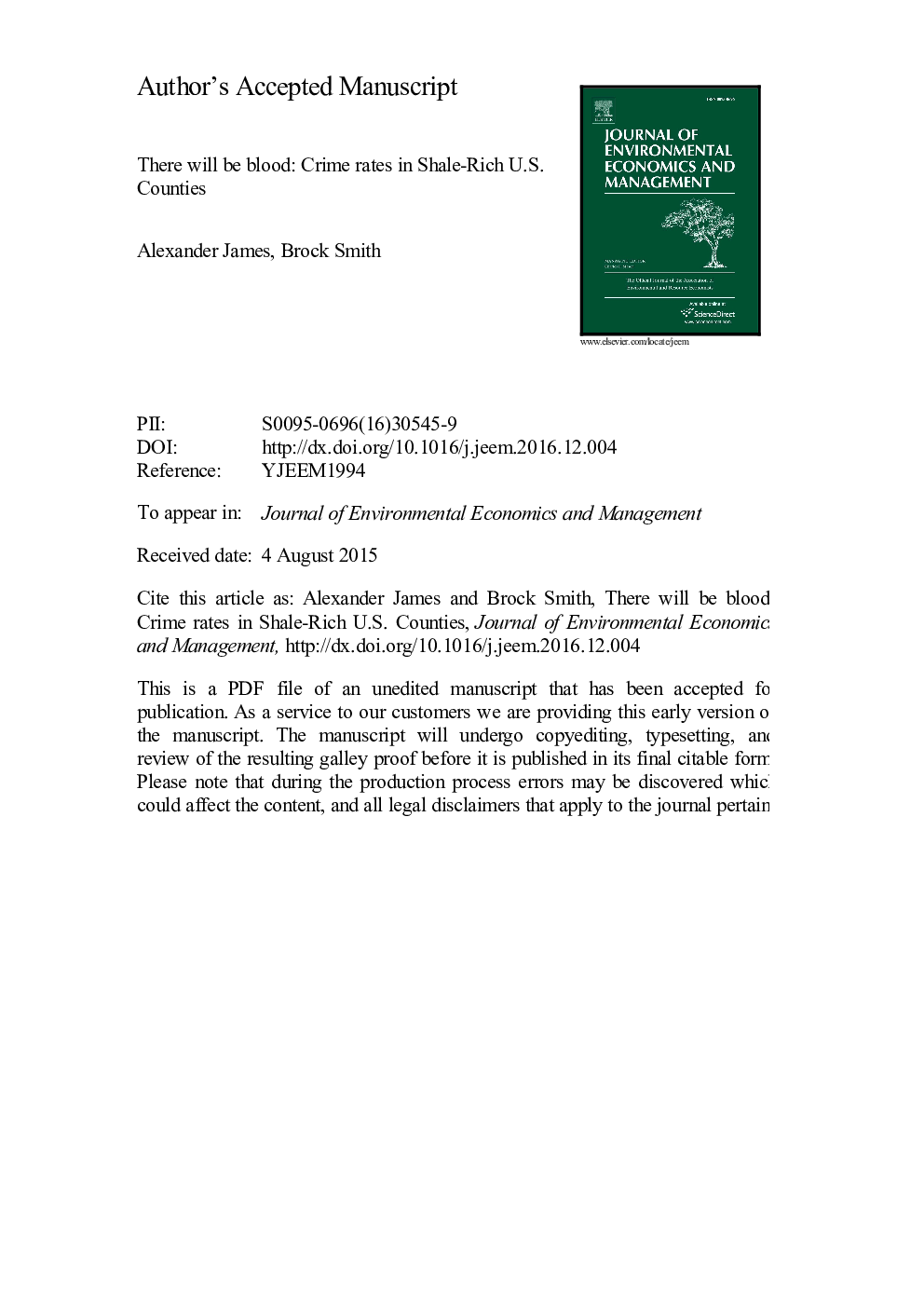| Article ID | Journal | Published Year | Pages | File Type |
|---|---|---|---|---|
| 5100399 | Journal of Environmental Economics and Management | 2017 | 58 Pages |
Abstract
Over the past decade the production of tight oil and shale gas significantly increased in the United States. This paper examines how this energy boom has affected regional crime rates throughout the country. We find positive effects on rates of various property and violent crimes in shale-rich counties. In 2013, the cost of the additional crimes in the average treatment county was roughly $2 million. These results are not easily explained by shifts in observed demographics like gender and age. There is however evidence that people with criminal records (registered sex offenders) moved disproportionally to shale-boom towns in North Dakota. We also document a rise in income inequality (a postulated determinant of criminal activity) that coincides with the timing of the energy boom. Policy makers in boom towns should anticipate these crime effects and invest in public infrastructure accordingly.
Related Topics
Social Sciences and Humanities
Economics, Econometrics and Finance
Economics and Econometrics
Authors
Alexander James, Brock Smith,
